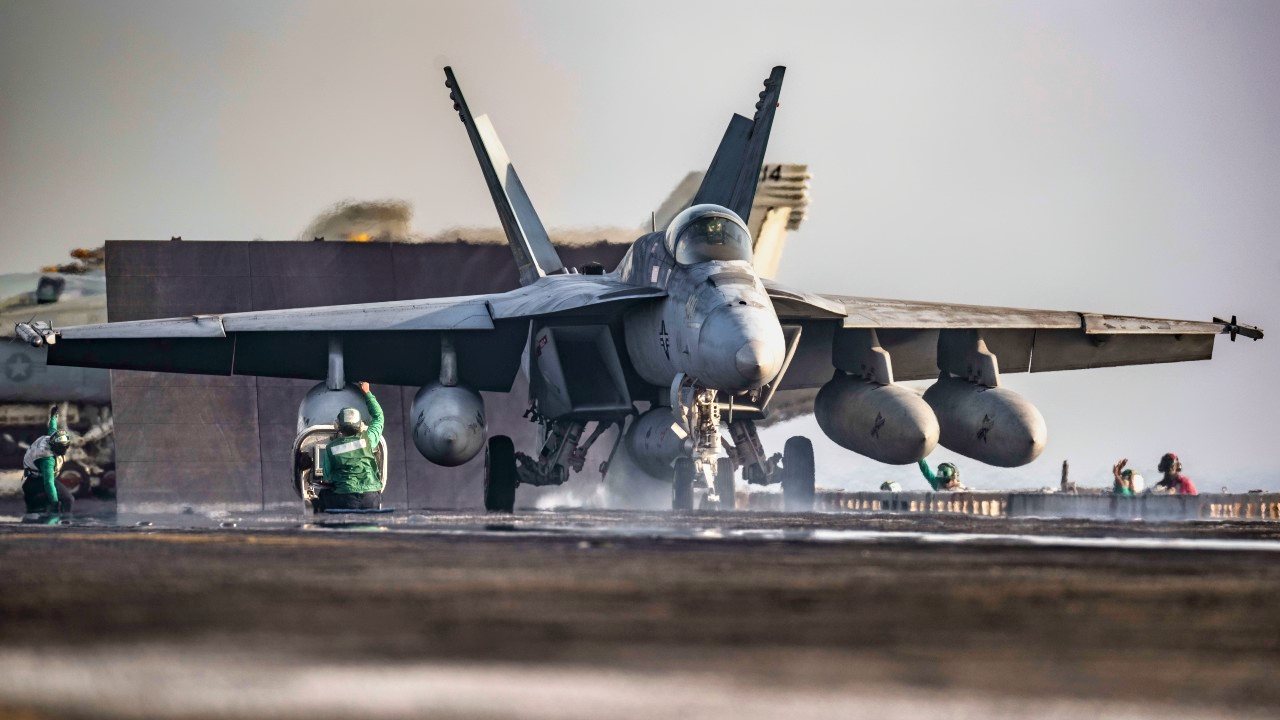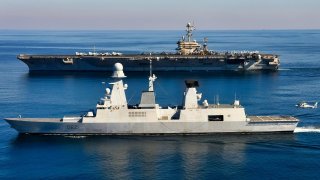DF-21D: China Built This Missile To Sink U.S. Navy Aircraft Carriers
China's military strategy includes a significant focus on expanding its arsenal of Dong-Feng 21 (DF-21D) ballistic missiles, known as "carrier killers," to counter U.S. naval capabilities.
Summary: China's military strategy includes a significant focus on expanding its arsenal of Dong-Feng 21 (DF-21D) ballistic missiles, known as "carrier killers," to counter U.S. naval capabilities.
-The DF-21, first introduced in the 1990s as a successor to the Dong Feng-2, is crucial for China’s anti-access/area denial (A2/AD) tactics, designed to prevent U.S. intervention in regional conflicts.
-With over 1,000 missiles, the DF-21D variant specifically targets maritime threats with precision and can potentially threaten U.S. aircraft carriers over 1,000 miles offshore. These developments pose a serious challenge to U.S. naval dominance in the Western Pacific, underscoring the strategic shifts in modern military engagements.
China’s DF-21D Ballistic Missile: A Growing Threat to U.S. Aircraft Carriers
China continues to grow its stockpile of carrier-killing ballistic missiles, and the Dong-Feng 21 (DF-21) is a crucial part of this inventory.
According to a Pentagon report released last year, the People’s Liberation Army Rocket Force possesses well over 1,000 of these medium-range weapons. The DF-21 is a two-stage, solid-fuel rocket projectile that plays a significant role in Beijing’s anti-access/area denial strategy. Since China currently operates just three aircraft carriers, compared to the U.S. Navy’s 11, Beijing depends on its arsenal of ballistic missiles to deter U.S. intervention.
The History of the DF-21D
Beijing introduced the DF-21 in the early 1990s to replace the aging Dong Feng-2. Like many military systems China developed in the second half of the last century, the Dong Feng was the product of collaborative research and development with the Soviet Union. From manufacturing equipment and technical documentation to licensed production, many of China’s weapons were derived from Soviet designs. In fact, the Dong Feng was a licensed copy of the Soviet R-2 short-range ballistic missile.
When the DF-21D entered service in 1996, it became the world’s first-ever anti-ship ballistic missile. This carrier killer was Beijing’s premiere solid-fuel road-mobile missile, powered by a two-stage solid propellant motor. The weapon is able to deploy a 600-kilogram payload with a maximum range of 2,150 kilometers.
The DF-21A variant features a modified nose section and a launch weight of more than 15,000 kg. Two sub-variant types exist in the DF-21 family—land-attack and anti-ship missiles. The DF-21C is a conventional version of the series, able to deploy at a likely range of more than 2,000 km. The DF-21D is designed to strike ships at sea. Like its predecessors, the DF-21D’s warhead is likely maneuverable and accurate within 20 meters.
Is the DF-21 Really a “Carrier Killer?”
When F/A-18 Super Hornets and F-35C Lightning II fighters launch from a U.S. aircraft carrier, they can travel around 500 miles away from the ship. Considering the DF-21D’s purported range, a U.S. carrier would have to be positioned more than 1,000 miles offshore in order not to risk destruction by the missile. If a DF-21 is launched, it could also be deployed with maritime intelligence capabilities, over-the-horizon radars, and other threat amplifiers.
A Congressional Research Service report published in 2020 outlined the growing threat these ballistic missiles present to U.S. interests in the South China Sea, warning that “China’s navy is viewed as posing a major challenge to the U.S. Navy’s ability to achieve and maintain wartime control of blue-water ocean areas in the Western Pacific—the first such challenge the U.S. Navy has faced since the end of the Cold War.”
In addition to threatening carriers in the sea, China’s ballistic missiles could also devastate U.S. facilities and assets positioned in Japan since the country is already within range of many of these deadly weapons.
A 2017 RAND report detailed this scenario:
“In 1996, the PLA was just beginning to develop conventionally armed ballistic missiles and had only a few dozen relatively inaccurate conventionally armed short-range missiles that could reach targets in Taiwan or Korea, but not U.S. bases in Japan. By 2015, however, the PLA’s [People’s Liberations Army’s] Second Artillery had deployed more than 1,200 conventionally armed ballistic missiles, including the DF-21C with the range to attack targets throughout Japan.”

As tensions in the South China Sea continue to escalate, a detailed understanding of the PLA’s true capabilities is necessary. While many of Beijing’s weapons and military systems have never been deployed in combat, the scope of their development in recent years is concerning.
About the Author: Maya Carlin
Maya Carlin, National Security Writer with The National Interest, is an analyst with the Center for Security Policy and a former Anna Sobol Levy Fellow at IDC Herzliya in Israel. She has by-lines in many publications, including The National Interest, Jerusalem Post, and Times of Israel. You can follow her on Twitter: @MayaCarlin.
Image: U.S. DoD Flickr.


